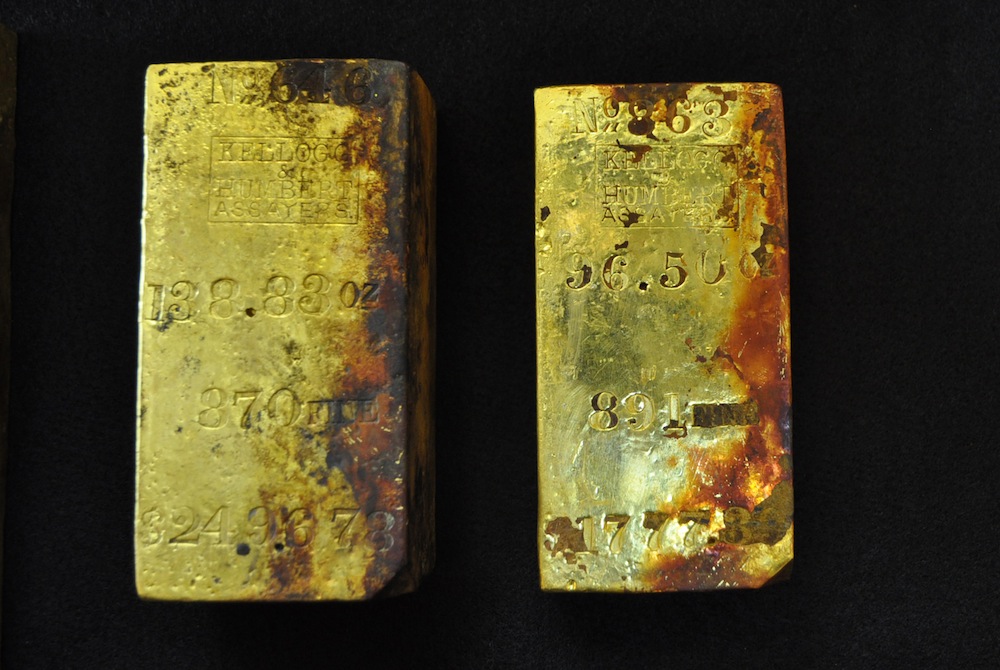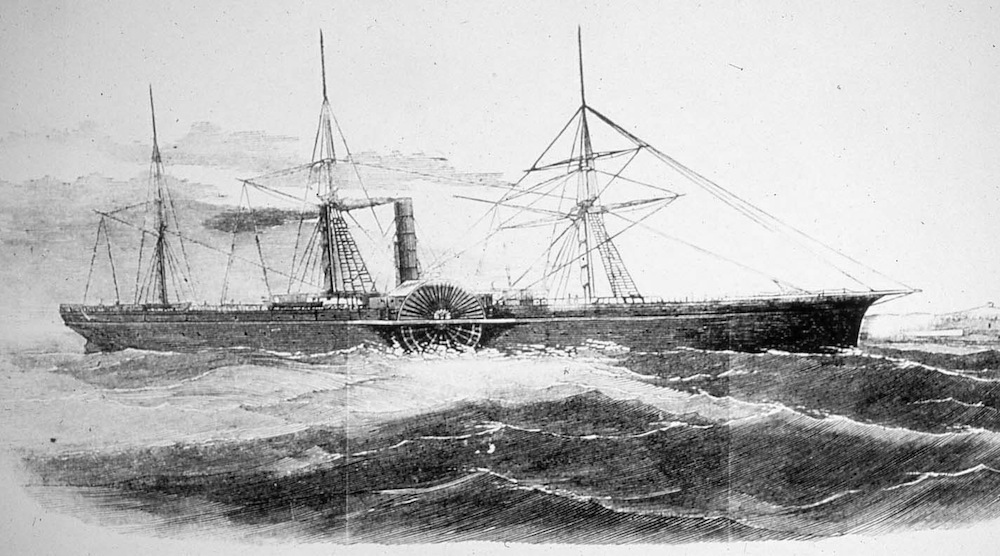Treasure Hunt: Shipwreck Yields Bonanza of Gold Bars & Coins

In 1857, during the dwindling years of the California Gold Rush, a steamship loaded with some 30,000 pounds (13,600 kilograms) of gold was ensnared in a hurricane and sunk off the coast of South Carolina, banishing gold bars and freshly minted coins to the bottom of the sea. Last month, during a reconnaissance expedition to the wreckage of the so-called "Ship of Gold," more than 60 lbs. (27 kg) of the lost treasure was recovered.
Odyssey Marine Exploration Inc., a company that specializes in deep-ocean exploration, retrieved five gold bars and two gold coins — one from 1850 that was minted in Philadelphia, and the other from 1857 that was minted in San Francisco — from the sunken ship known as the SS Central America.
The precious artifacts were recovered during a reconnaissance dive to the shipwreck site on April 15. Odyssey Marine Exploration researchers are in the process of documenting the underwater site, and they eventually plan to conduct a full archaeological excavation of the shipwreck, according to company officials. [See photos of the expedition to the Gold Rush shipwreck]
The remains of the SS Central America were first located in 1988 by the Columbus-America Discovery Group. The ship was found at a depth of 7,200 feet (2,200 meters), about 160 miles (257 kilometers) off the coast of South Carolina.
From 1988 to 1991, recovery operations managed to retrieve gold from approximately 5 percent of the total shipwreck site, historians have said. Odyssey Marine Exploration now has an exclusive contract to excavate and recover the rest of the SS Central America's treasure.
Experts say the shipwreck could still contain a commercial shipment of gold that was valued in 1857 at $93,000, company officials said. A "substantial amount of passenger gold," valued in 1857 at between $250,000 and $1.28 million, could also be locked within the ship's sunken remains, according to Odyssey Marine Exploration.
Still, the treasure's true worth remains to be seen. "The ultimate value of the recovery can only be determined once the total quantity, quality and form of the recovered gold is known," company officials said in a statement.
Sign up for the Live Science daily newsletter now
Get the world’s most fascinating discoveries delivered straight to your inbox.

Last month, the Odyssey Marine Exploration's remotely operated underwater vehicle (ROV), named Zeus, became the first to visit the famous shipwreck in decades.
"This dive confirms for me that the site has not been disturbed since 1991, when I was last there," Bob Evans, chief scientist and historian for the Recovery Limited Partnership, which legally owns the shipwreck, said in a statement.
Besides the gold bars and coins, the two-hour expedition also uncovered a bottle, a piece of pottery, a sample of the shipwreck's wooden structure and part of a scientific experiment that had been left at the site 20 years ago, company officials said.
"The skill exhibited and results achieved during the initial reconnaissance dive reinforces our belief that the Odyssey team was the absolute best choice for this project," Craig Mullen, director of operations for the Recovery Limited Partnership, said in a statement.
The Odyssey team also plans to collect biological samples from the shipwreck site, which could offer researchers a glimpse into deep-ocean biological processes, company officials said.
The SS Central America was 280-feet-long (85 meters), and was christened the SS George Law when it first launched in 1853. The steamship operated during the California Gold Rush on the Atlantic leg of voyages between San Francisco and New York. As such, the ship made 43 round trips between Panama and New York before it sank.
Follow Denise Chow on Twitter @denisechow. Follow Live Science @livescience, Facebook & Google+. Original article on Live Science.

Denise Chow was the assistant managing editor at Live Science before moving to NBC News as a science reporter, where she focuses on general science and climate change. Before joining the Live Science team in 2013, she spent two years as a staff writer for Space.com, writing about rocket launches and covering NASA's final three space shuttle missions. A Canadian transplant, Denise has a bachelor's degree from the University of Toronto, and a master's degree in journalism from New York University.









